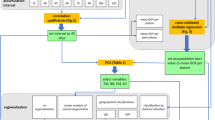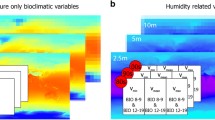Abstract
We simulated male gypsy moth flight phenology for the location of 1371 weather stations east of 100° W longitude and north of 35° N latitude in North America. The output of these simulations, based on average weather conditions from 1961 to 1990, was submitted to two map-interpolation methods: multiple regression and universal kriging. Multiple regression was found to be as accurate as universal kriging and demands less computing power. A map of the date of peak male gypsy moth flight was generated by universal kriging. This map itself constitutes a useful pest-management planning tool; in addition, the map delineates the potential range of the gypsy moth based on its seasonality at the northern edge of its current distribution in eastern North America. The simulation and map-interpolation methods described in this paper thus constitute an interesting approach to the study and monitoring of the ecological impacts of climate change and shifts in land-use patterns at the sub-continental level.
Similar content being viewed by others
Author information
Authors and Affiliations
Additional information
Received: 26 May 1998 / Accepted: 6 July 1998
Rights and permissions
About this article
Cite this article
Régnière, J., Sharov, A. Simulating temperature-dependent ecological processes at the sub-continental scale: male gypsy moth flight phenology as an example. Int J Biometeorol 42, 146–152 (1999). https://doi.org/10.1007/s004840050098
Issue Date:
DOI: https://doi.org/10.1007/s004840050098




